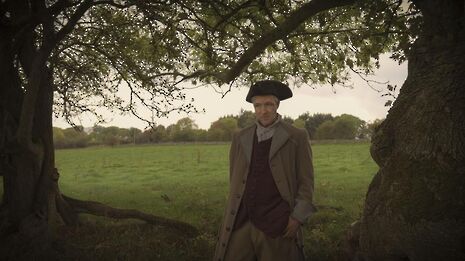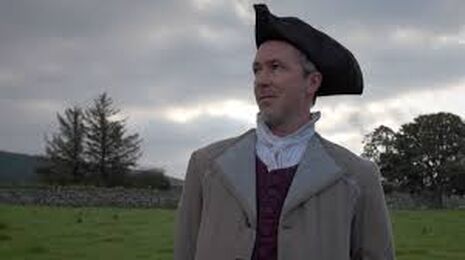Preview: Further Beyond
Annabel Lawson reflects on this meta-documentary and the act of historical and creative reconstruction

This is a film about making a film about recreating histories, and it is unexpected and rewarding. The ostensible project is a biopic of an 18th-century Irishman, Ambrose O’Higgins, who one day left his life as a tenant farmer in Co. Meath and set off, via Cádiz, to end up as Governor-General of Chile. His extraordinary journey involved crossing the Andes on foot, nearly dying in doing so.
Yet this is not what the film is about. Further Beyond draws attention to the way in which human histories are composed of choices on the part of their historians: what to leave in, what to leave out, and how to interpret and communicate lives and events of which, often, very little is known.
“Further Beyond draws attention to the way in which human histories are composed of choices on the part of their historians”
The film exposes the layers of ‘reality’ involved in the process: which locations to shoot and which not to shoot; the visual introductions; the additional human stratigraphy created by the actors themselves and even the empathies of their re-creators: “this is a personal film for Joe and for me, leaving Ireland, moving away, leaving home…” said co-director Christine Molloy at the talk after the screening.

The quest to locate and identify fragments of Ambrose’s early life was immensely interesting, and the problems its reconstruction as a ‘story’ posed in terms of choices was subtly and skilfully portrayed through this form of self-conscious ‘metafilm’. These two strands run together: the one a powerful human story and the other a demonstration of the ill-considered, almost unconscious way we normally make reconstruction choices, worked wonderfully well together.
But there is a further strand, in some ways complementary, but in many ways competing: the more straight-forward biopic of ‘Helen’. Helen also made the journey across the Atlantic, some one and a half centuries later, but in the opposite direction, from her parents in the States to Aunt Nora in Ireland. A faded, folded newspaper clip of the baby in her basket attests to her brief flicker of fame for having done so at such an early age. Helen ends up talking (and laughing – almost flirting) to camera as a handsome old woman sporting plum-coloured lipstick. The narrator talks of her as his mother. Voice-over two, who is doing the narrating, points out that Helen is not his mother.
“As with history, a decision has to be made: a story has to be recreated and conveyed, right or wrong”
In fact, the audience spends much of the film in the company of the two actors of Voice-over one and Voice-over two, who take turns sitting at a utilitarian desk in an unexceptional room in front of a script on bright red paper and a microphone. Voice-over two is disappointed to discover that he is not to be Voice-over number one. These are real people whose lives also intrude on the digressive biopics of O’Higgins and Helen. He asks the invisible directors: "why is the actor playing Higgins a Chilean? He doesn’t even look Irish. There must be plenty of Irish actors who would like the part…". Funny he should say that: we’ve been wondering, too.
This is a clever film. It uses a documentary format to deconstruct the workings of the documentary. It needed an historical subject as an example for its digressive focus, and took Ambrose O’Higgins and Helen. I wonder if it was one too many. But then again, as with history, a decision has to be made: a story has to be recreated and conveyed, right or wrong
 News / Uni Scout and Guide Club affirms trans inclusion 12 December 2025
News / Uni Scout and Guide Club affirms trans inclusion 12 December 2025 News / Pembroke to convert listed office building into accom9 December 2025
News / Pembroke to convert listed office building into accom9 December 2025 Features / Searching for community in queer Cambridge10 December 2025
Features / Searching for community in queer Cambridge10 December 2025 News / Uni redundancy consultation ‘falls short of legal duties’, unions say6 December 2025
News / Uni redundancy consultation ‘falls short of legal duties’, unions say6 December 2025 News / Gov declares £31m bus investment for Cambridge8 December 2025
News / Gov declares £31m bus investment for Cambridge8 December 2025








